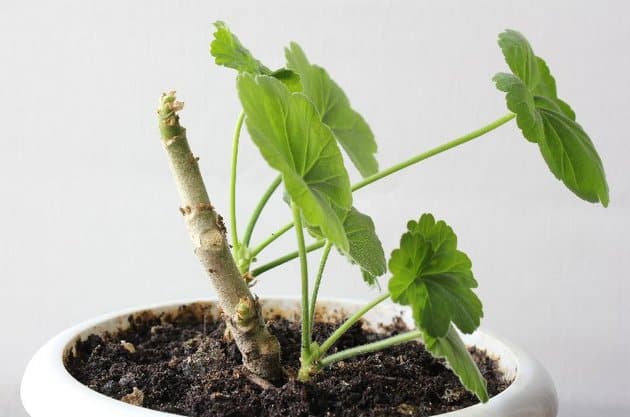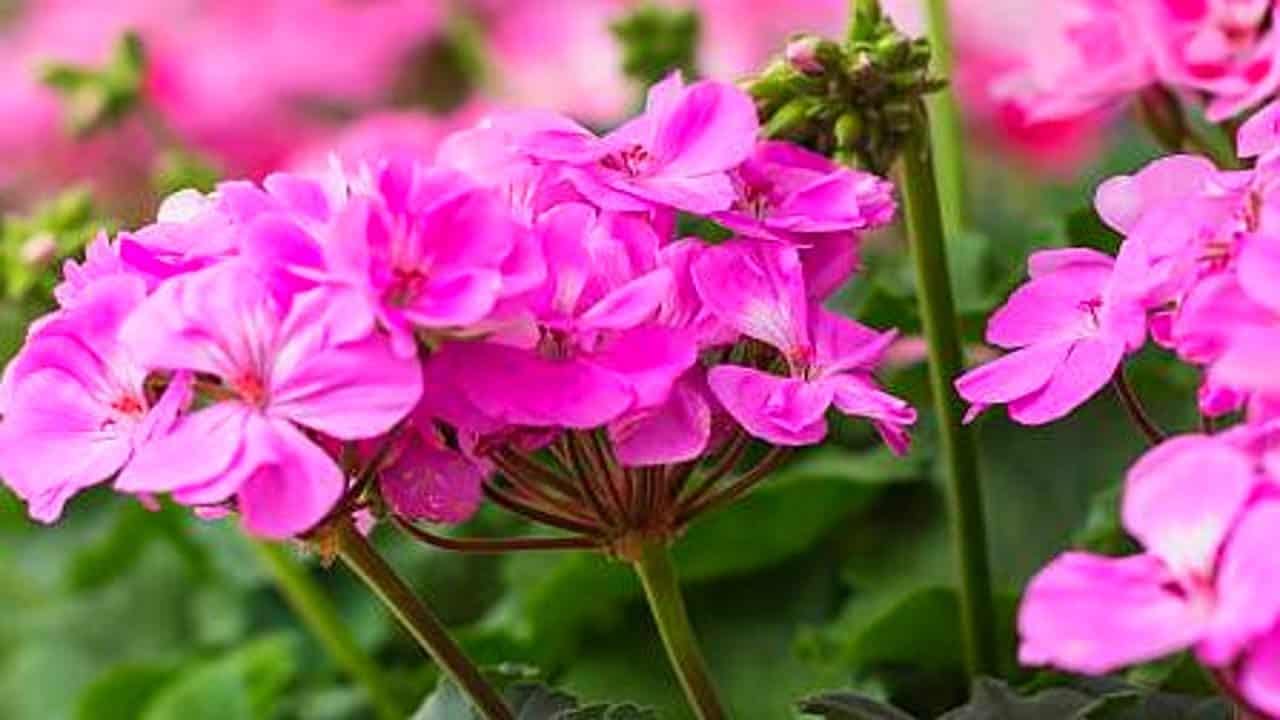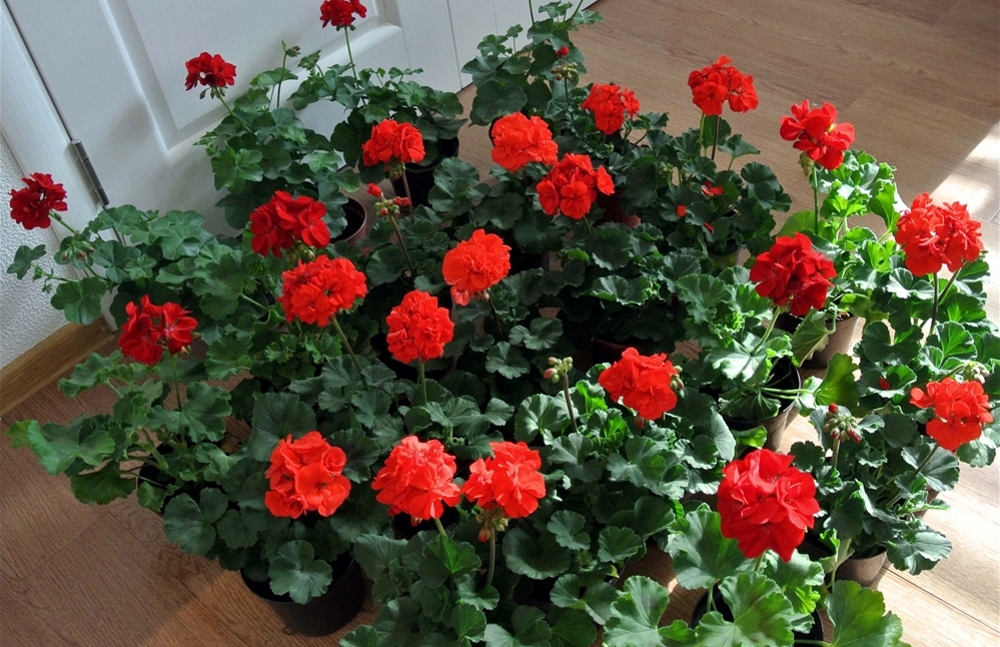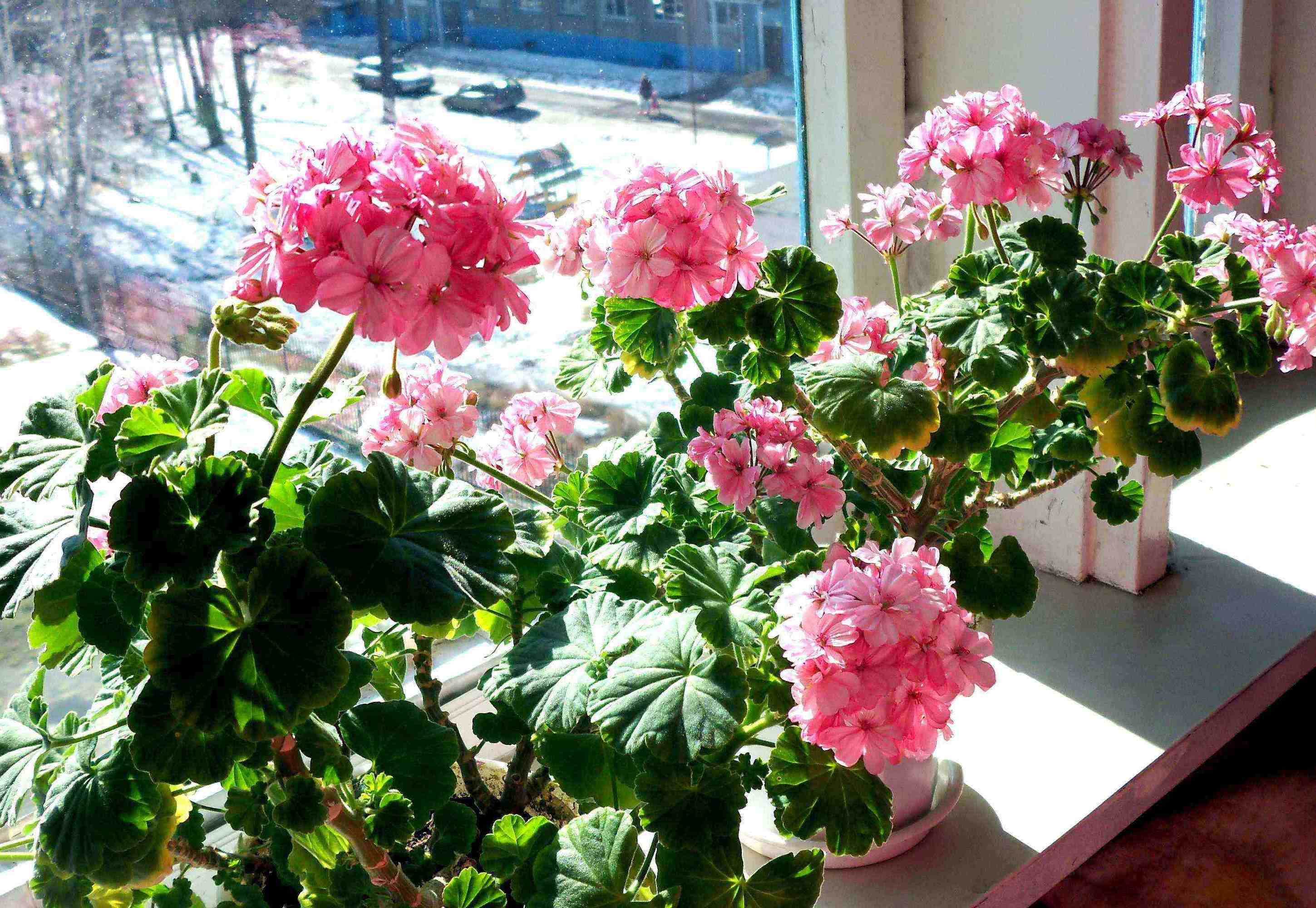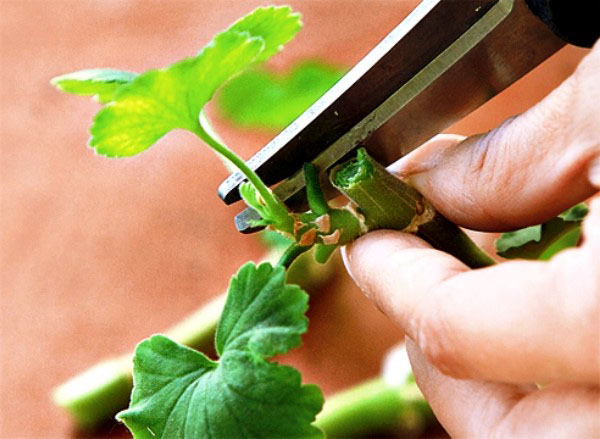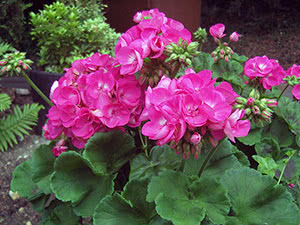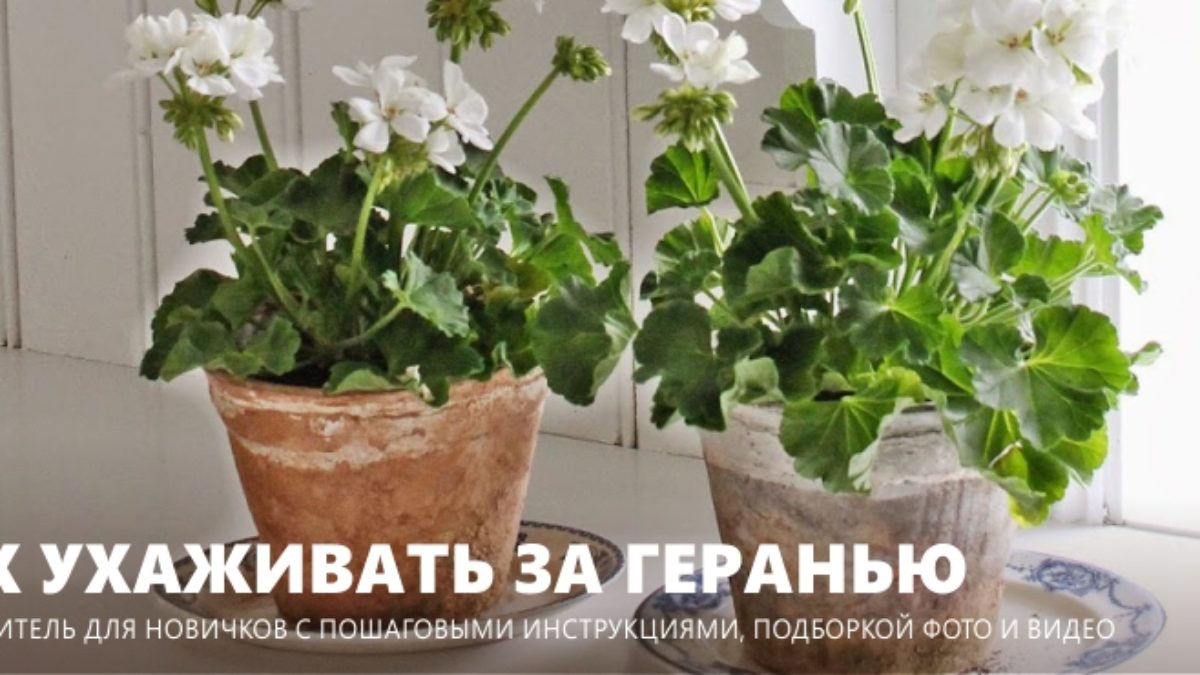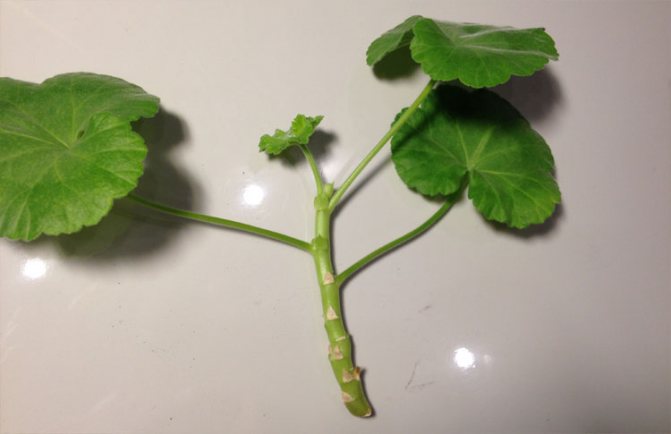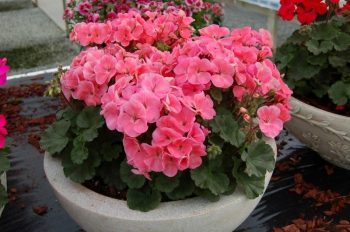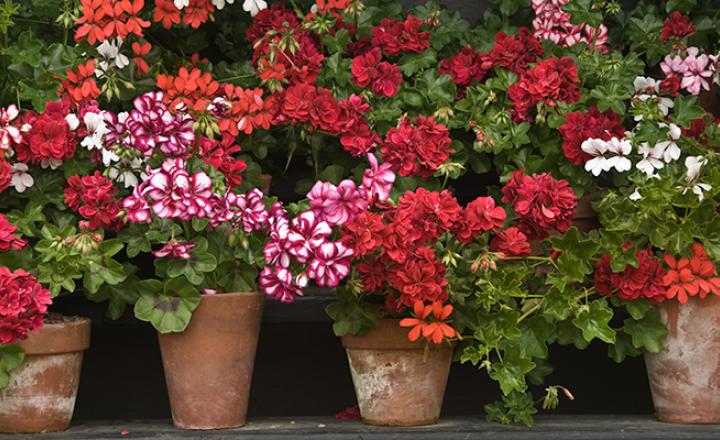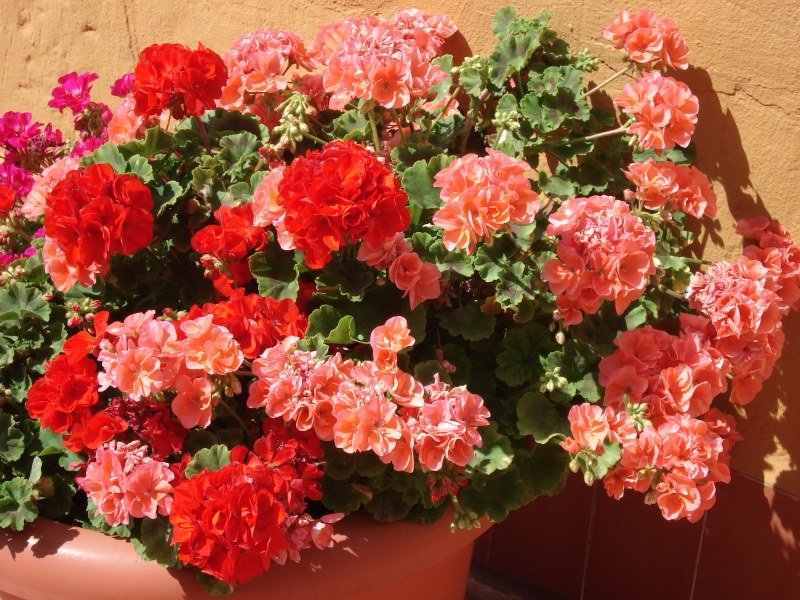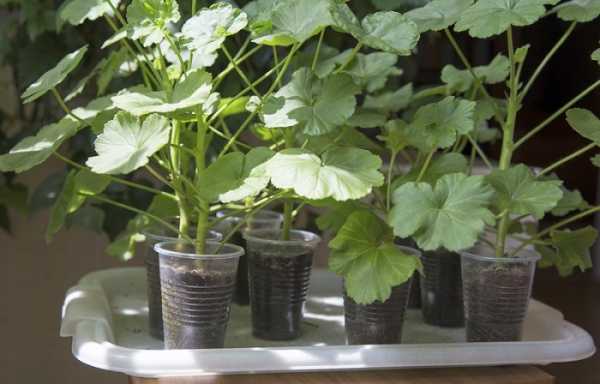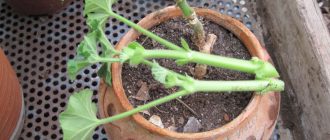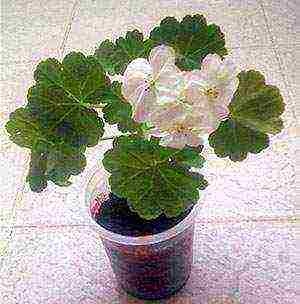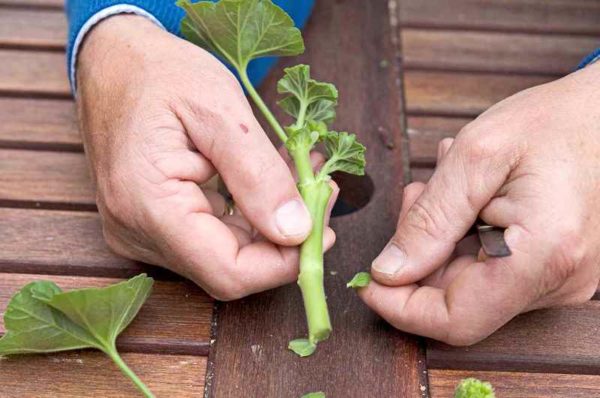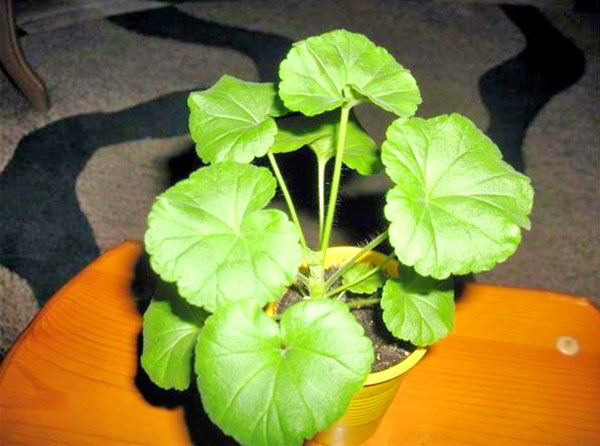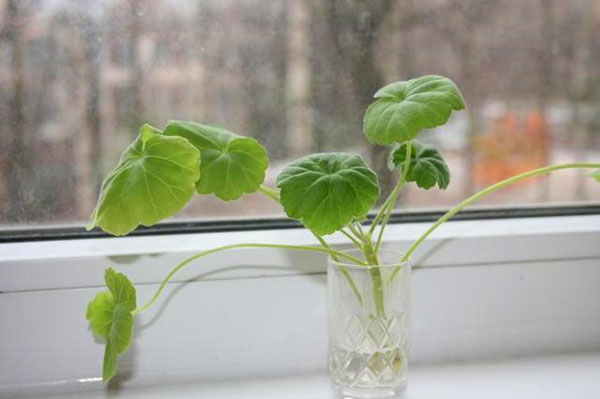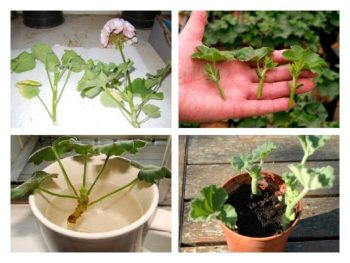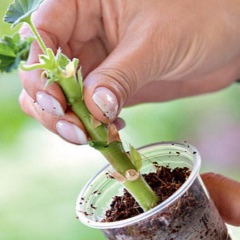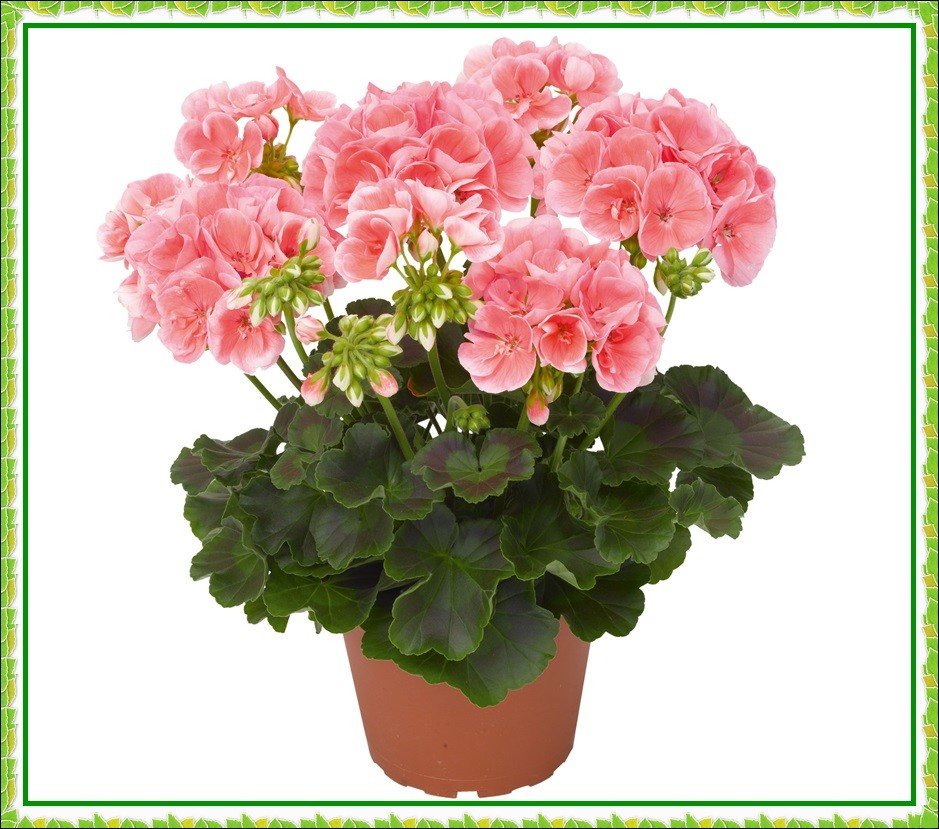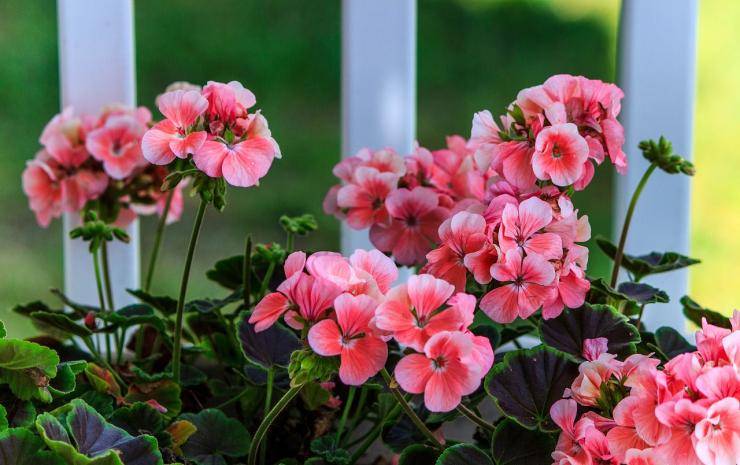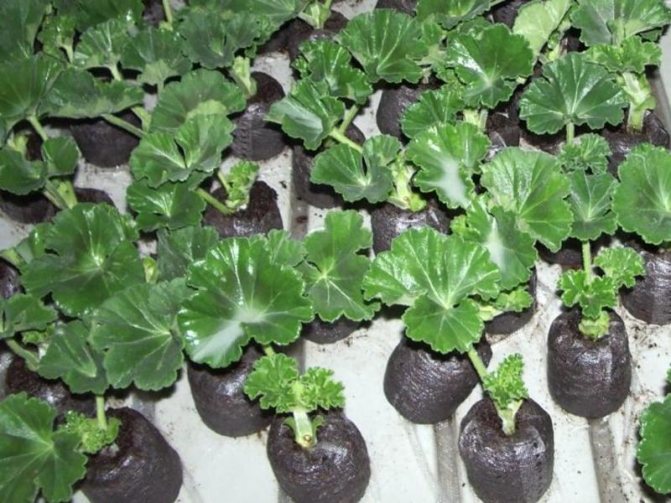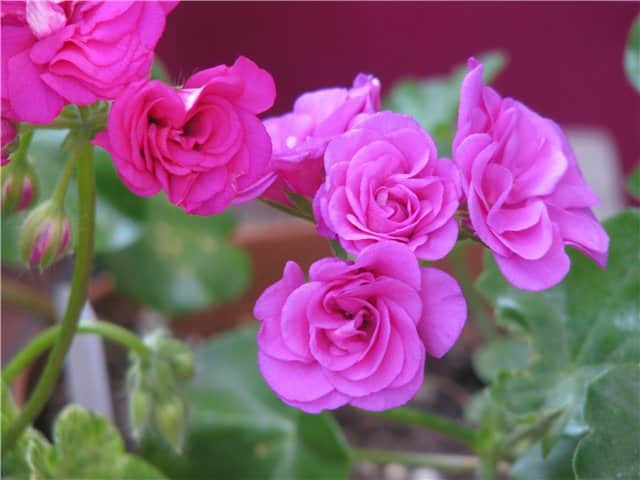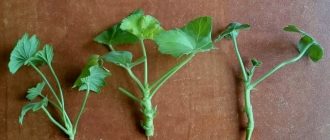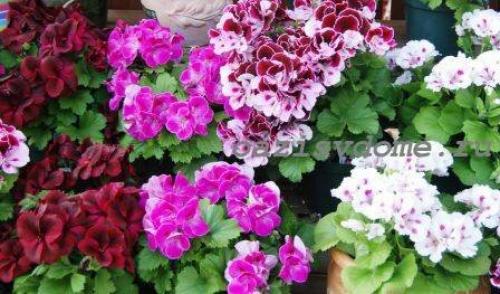Preparation of planting material, substrate and rooting tanks
Before removing cuttings from the mother plant, it is recommended to take measures to enhance the vegetation of the bush. To do this, the flower is shed in 2 weeks with any available fertilizer for flowering indoor plants with a decrease in concentration. The optimal feeding dose is 2 times less than indicated on the package. Pre-watering the earthen coma with a small amount of water will help eliminate burning of the root system.
How to remove cuttings from a bush
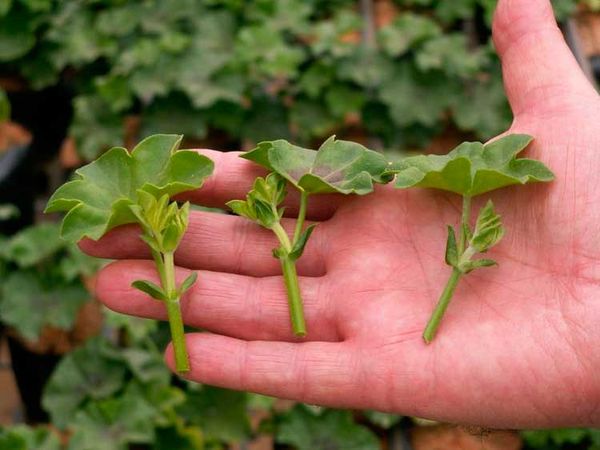
By following the step-by-step instructions, you can get high-quality planting material that will root successfully.
- It is necessary to take a sharp knife with a thin blade, disinfect it by boiling it in water or wiping it with cotton wool dipped in alcohol.
- For cutting, the tops of the shoots are selected, on which at least 3 true leaves grow.
- Trimming is done at a 90 degree angle with a quick motion that avoids unnecessary tissue damage.
- The length of the cutting should be about 5-7 centimeters.
- If there are buds on the shoots, it is best to cut them off, as otherwise the faded and properly unrooted seedling will die.
In order for the shoots removed from the bush to take root successfully, they must be properly prepared. For this, the planting material is placed in a dark place without direct sunlight, where the slices can dry well. When they are covered with a thin film, it is recommended to soak the cuttings in a solution of the drug "Kornevin" prepared according to the instructions.
Also, do not forget about the mother plant - the places of the cuts must be treated with crushed charcoal or activated carbon. Such a simple manipulation will help the bush to quickly tighten the "wounds" and prevent possible rotting, infection in the tissue.
How to make a substrate
A special germination environment for cuttings is a prerequisite for their successful rooting. The prepared soil must be characterized by good air permeability (be loose), as well as sterility.
The substrate can be prepared according to the following schemes:
- 3 parts universal soil, 1 part vermiculite and 1 part sand;
- Peat, perlite and sand in equal proportions.
It is imperative to disinfect the soil by heating it in a microwave or oven at a high temperature. You can also spill the earth with a hot solution of potassium permanganate of low concentration (the water should be slightly pink). An effective way to prevent soil contamination by fungal microorganisms and other diseases is to treat it with special preparations (Fitosporin and its analogues) according to the instructions.
What should be the capacity
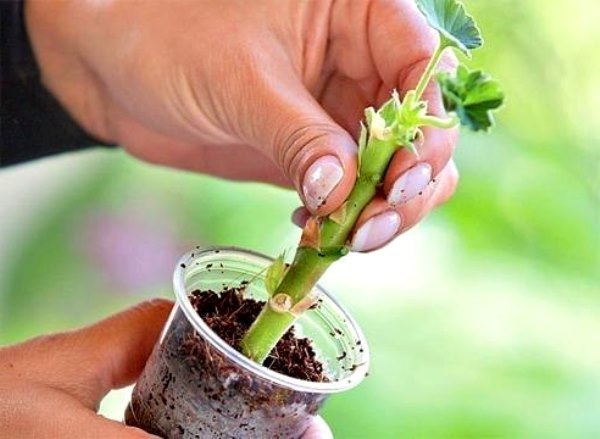
As containers for planting cuttings, ordinary disposable cups of small volume (up to 200 ml) are suitable. You can use jars of yoghurt and any other dairy products.
A prerequisite is that there must be drainage holes at the bottom of the cup to drain excess moisture. Otherwise, a weak root system, not adapted to watering, will begin to rot, and the young seedling will die without making you happy with flowering. A drainage layer is laid at the bottom, which can be used as purchased expanded clay or crushed foam. Small crushed stone or red brick, ceramic shards are also suitable.
So that during growth the root system does not suffer from the sun, you can carry out simple manipulations.It is enough to take a sheet of white paper, wrap a glass with a handle with it, and then insert it into a second container of the same volume.
Pelargonium cuttings video
With the appearance of roots, which can be seen through a transparent glass, fertilizers begin to be applied. Foliar dressing is carried out once a week. You can use special fertilizers for indoor and garden plants. During the growing season, feeding is carried out from the end of April to the beginning of September every 14 days.
For transplanting young pelargoniums, you can use the following substrate: manure humus, leaf compost, peat in equal amounts and half of river sand. As the plants grow, they are transplanted into larger containers. The pot should not be very large.
Water the geraniums abundantly, but do not overmoisten the soil. In winter, it is watered every 2-3 days, and in summer, once a day. During watering, care should be taken that the ground is not wet.
Young pelargoniums must be pinched. The growth point is removed above 4-5 leaves. With this method, the plant blooms profusely and becomes fluffy. Periodically, you should loosen the top layer of the earth in the soil, remove damaged and yellowed leaves.
Preparation of planting material
We recommend that you familiarize yourself
How to propagate geranium by cuttings at home? How to choose scions? Such types of pelargonium as ivy (ampelous), royal, zonal and fragrant are propagated by cuttings. Roots are formed on the stems cut from these flowers.
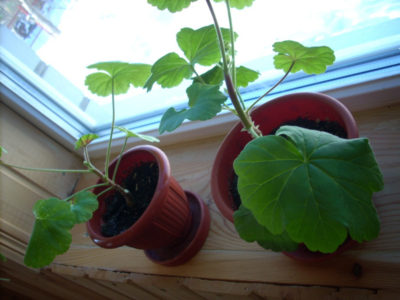
Many people think that it is better to reproduce geraniums in the spring, since it is at this time that the dormant period ends in plants, life processes are activated. But pelargonium is recommended to be propagated in the fall: from late August to early September. The fact is that during this period, the plants are pruned after flowering. Therefore, you can select strong cuttings for their further rooting.
The disadvantage of the autumn-winter breeding of geraniums is the slow formation of young roots and the elongation of the shoots in length. During the dormant period, flower buds are laid. It is better not to prune in spring, as pelargonium is preparing for flowering.
Since pelargonium can be propagated incorrectly, when cutting cuttings, you must adhere to the following rules:
- 1For rooting, choose healthy and strong shoots. Shoots should be 7-15 cm long.
- 2 The cut is cut with a sharp blade or knife under the knot. Before use, tools are disinfected with alcohol or a weak solution of potassium permanganate. In no case should the escape be broken off.
- 3On the stem, 2-3 top leaves are left, and the rest are cut off. Large leaf blades are cut in half to reduce nutrient consumption for root formation.
- 4 The shoot is left in a shaded place for 2-3 hours to dry the cut. During this time, a film should form on it. Then the place of the cut is powdered with a root growth stimulant, for example, Kornevin, or coal dust.
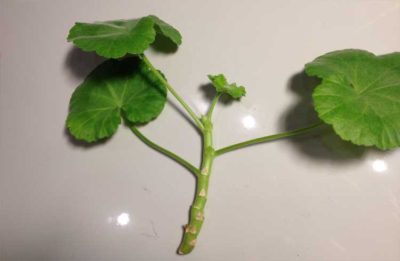
If the grafting of pelargonium is carried out in the spring, all buds are removed from the plant. This is done so that nutrients are spent on the formation of new roots, and not on flowering. In the cut off shoot, the cells begin to lose moisture due to the lack of a new portion of liquid. In order to survive, the cutting grows new roots. Therefore, it is placed in water or planted in moist soil. For geraniums, propagation by cuttings is the best way in which varietal characteristics are preserved.
Why geranium haircut
Every spring, we can observe how bushes and trees are trimmed on the central streets of the city, giving them the correct shape. But few people realize that this haircut is not only decorative. Plants are pruned for the sake of healing and rejuvenating the crown. The same applies to indoor specimens prone to intensive growth, such as pelargonium (geranium).
The purpose and benefits of pruning
The main purpose of pruning any plant is to thin the crown to improve air exchange, lighting and leaf nutrition. Without this event, the geranium will look neglected and unhealthy, stop blooming, turn into a shapeless and unkempt bush.
- the flowering period is extended;
- metabolism accelerates and its quality increases;
- more lateral branches and young shoots are formed;
- wintering is facilitated.
The flowering time of geraniums depends on the variety and runs from early spring to late autumn, and in some varieties even in winter. In order to have a lot of inflorescences on the plant, it is necessary to cut the bush, but do it correctly and in a timely manner, according to the characteristics of the variety.
Autumn pruning is a more logical procedure than spring pruning. From November to February, geraniums begin a dormant period. The plant often slows down its development while continuing to feed. It is very difficult to maintain a lush crown in this state, while a haircut makes wintering much easier. Cardinal pruning allows pelargonium to refresh the crown and re-form the bush.
In winter, it is possible to trim geraniums only if there are conditions for keeping a trimmed flower, leaving at least two lower leaves. After the crown of the plant is rejuvenated due to cardinal pruning, you can form its bush during the winter by pinching and decorative pruning. Zonal pelargonium has the peculiarity of fast budding and early bud formation, so she will only be happy with a haircut;
- ivy-leaved pelargonium can be cut in spring and autumn. If the bush stretches too much during the winter, it is trimmed in late February - early March;
- flower growers cut ampel geranium at their discretion, if the plant does not need pruning, then it is not touched until spring;
- the variegated species is hard to endure autumn pruning, it is easier for them to go through such stress in the spring;
- mini-varieties of geraniums are not cut at all. The crown of these tiny pelargoniums is adjusted only for reasons of beauty and decorativeness of the bush;
- Royal Pelargonium is trimmed "under a stump" and placed in a cool place. But such a radical haircut is not done regularly, but if necessary, because the plant does not develop as intensively as, for example, zonal geranium.
How to plant geranium cuttings
To obtain high-quality planting material, it is necessary to choose only a healthy mother plant for propagation by cuttings. If there are inflorescences on the shoot, they must be cut off, otherwise the plant's resources will be spent on the opening of flowers, and the propagation of geraniums by cuttings at home will drag on for several months. After planting, the seedling must be placed in a well-lit place.
Preparation
An important role in the process of rooting cuttings is played by the preparatory stage:
- Disinfection of instruments. The stalk is cut off with a pruner or a sharp knife, which must be wiped with alcohol after previous work.
- The choice of capacity. Instead of a pot, a plastic cup is used, in the bottom of which drainage holes are made.
- Pruning. A lateral stem 5–7 cm high is cut off from the mother plant at a right angle. The shoot must have at least 3 leaves.
- Treatment. To speed up the rooting process, the cut site is impregnated with the Kornevin stimulator. The stalk should be placed in direct sunlight for 2-3 hours. After the cut is covered with a film, pelargonium can be planted.
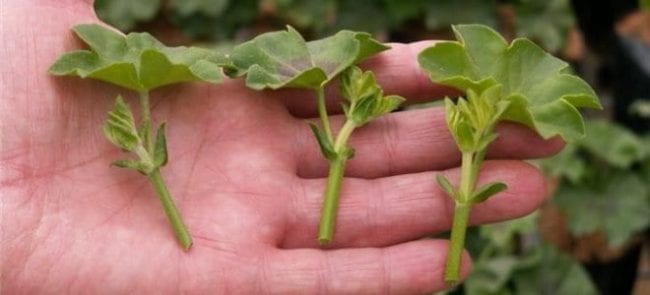 Pelargonium cuttings prepared for rooting
Pelargonium cuttings prepared for rooting
Rooting
You can germinate geraniums in water or soil. Side shoots take root best of all. The root system develops in 2-3 weeks. You can check whether the grafting of pelargonium was successful or not, in the following ways:
- Plant the flower in a transparent glass or pot. As it develops, the root system will be visible through the walls of the container.
- Track the size of the plant.About a month after planting, the stalk begins to grow, new leaves appear. If such a phenomenon takes place, the plant is guaranteed to have taken over.
In water
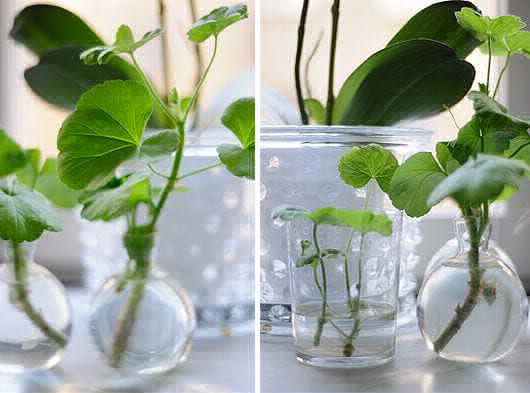 Rooting pelargonium in water
Rooting pelargonium in water
Growing new bushes must be carried out taking into account the following rules:
- for rooting of each variety, you need to take a separate container;
- roots form faster in an opaque container, exposed in a well-lit place;
- water should cover a third of the cutting;
- as the liquid evaporates, it must be topped up, not changed.
In the soil
 Rooting of pelargonium in the ground
Rooting of pelargonium in the ground
Fragrant and royal geraniums need to be rooted only in the ground. The procedure consists of several stages:
- pebbles are placed on the bottom of the drainage container;
- a peat tablet or pre-calcined soil is laid on top, which is abundantly watered with water;
- seedlings are fixed in the center of the glass and covered with soil by a third;
- you need to water the substrate every 2 days.
How to propagate a flower at home?
Next, it will be considered how and when to cut a plant, propagate it by seeds and leaves.
Cuttings
It is better to cut royal geraniums in late August - early September:
Pruning is done after flowering, so strong and healthy cuttings can be cut during this period. If the cutting was planted at this time, it may already bloom in the spring. It is necessary to cut off the apical cuttings, about 7-10 centimeters long, leave 3-4 leaves on each, remove the remaining leaves.
The place of the cut is dipped in crushed coal, after which the cuttings are dried for several hours.
Individual dishes are prepared with moistened soil for a separate cuttings in order to protect all seedlings from infectious diseases.
The soil must contain peat and sand. First, you can use peat tablets, after rooting, transplant the seedlings into the ground.
Seedlings do not need to be covered
Cuttings are placed in moderately lit places without drafts.
It is important to monitor the moisture content of the soil. One to two months after rooting, the flower is transferred with a clod of earth to a pot with nutritious soil.
Cuttings in water do not root, they can rot.
We offer you to watch a video about the propagation of Royal geranium by cuttings:
Seeds
Reproduction by seeds allows you to get a flower with a variety of colors of flowers and leaves
It is important to buy seeds from a reputable manufacturer. Pelargonium can be planted all year round if there is an additional light source.
Late February - early March is considered the most favorable time for plant development.
- Before planting, the seeds are soaked for 2-3 hours in any solution similar to Epin or Zircon. You can buy soil for seedlings or mix regular soil with peat and sand in a 2: 1: 1 ratio. It is necessary that the soil is not heavy or too light. The soil should be disinfected: pour boiling water, a solution of phytosporin or potassium permanganate, warm it up in the microwave or oven.
- The land is moistened before planting. The seeds are laid out in containers or in a box at a distance of five centimeters from each other on the surface of the poured soil and lightly pressed against it.
- Then sprinkle with a thin layer of soil about 3-4 millimeters and spray with water from a spray bottle. Then cover with glass or foil until shoots appear. Seedlings are placed in a warm and moderately lit place.
- When germination occurs, the shelter is removed and the small geranium is placed on a light windowsill, but not in the south side.
- If pelargonium was planted in a common container, then with the appearance of a pair of real leaves, it is carefully placed in a separate bowl. The transfer is carried out with a clod of earth, without affecting the roots.
If the seeds are of good quality, the first flowers will appear in four to five months.
Leaves
It is necessary to cut off or pinch off a leaf with a small piece of the stem, which should have at least 2 nodes: from one of them roots will appear, the other will become a growing point for a new plant. The cut leaf is placed in a container with water until the first roots appear.
The pot is selected in a small size and from any material with drainage holes in the bottom. In a large pot, the plant will produce new shoots, but will not be able to flower.
The soil for geraniums is selected in any flower shop. You will need loose soil for indoor plants. Florists recommend using a universal soil and saturate it with fertilizers and additional additives. River sand, vermiculite and perlite are added to the soil. The soil should not contain lumps, you should make sure that there is no mold in it.
In order for the flower to develop and grow, peat must be in the soil. Before planting a leaf, the earth is disinfected. It can be ignited in a frying pan, in a microwave oven or oven, or soaked in a weak solution of potassium permanganate.
- A drainage layer is laid at the bottom of the pot: brick chips, small pieces of foam or expanded clay. Next is the soil layer.
- After that, the soil is slightly moistened.
- A small depression is made and a sheet is placed there.
All actions are performed carefully and carefully so as not to damage the young roots. You do not need to cover seedlings with jars or bags.
How to save a royal geranium if its leaves turn yellow, and what to do in order to prevent it? you can find out the answer to this question on our website. Also read on how to get your royal geranium to bloom.
Geranium in indoor floriculture
The plants in question belong to the genus Pelargonium from the Geraniaceae family. The genus has up to 350 species common in South Africa. In nature, they are perennial flowering shrubs with a height of 20 cm to 1 (1.5) m. Leaves are reniform-rounded, whole or dissected, pubescent with glandular, containing essential oil, or simple hairs. The flowers are white, red or pink, collected in a few umbrella inflorescences. The name of the genus Pelargonium in Greek means crane, because of the similarity of the fruit to the beak of a crane.
Work on the cultivation of these plants began at the beginning of the 19th century in England, then continued in France, the USA, and Germany. As a result of long-term selection work, the shape, size and color of the flower have changed, the diameter of the inflorescence has increased, varieties with terry corollas have appeared.
Quite often, pelargonium is called geranium in everyday life, although in fact this plant is already a different genus Geranium, also belonging to the Geranium family, widespread in the temperate zone of the Northern Hemisphere, where they are often found in meadows, forests, steppe and mountain regions Europe, the Caucasus, Central Asia, Siberia and the Far East.
Unlike pelargonium, these are mainly herbs, often perennial, with finger-dissected leaves and purple flowers. Many representatives of this genus are medicinal plants, for example, meadow geranium or blood-red geranium. Some are decorative, and in recent years they are increasingly used in the design of flower beds, in landscape plantings, undersized species - on alpine hills.
The main types used in landscaping
In culture, the most widespread are numerous hybrids and varieties of zonal pelargonium (P. zonale), large-flowered (P. grandiflora), ivy (P. peltatum) and fragrant (P. odoratissimum).
The most popular can rightfully be considered zonal pelargonium (popular name - kalachik) - an unpretentious flowering shrub with a height of 20 cm to 1 m with kidney-shaped slightly wavy pubescent green leaves, the decorativeness of which is given by concentric circles of contrasting shades.The flowers are collected in multi-flowered umbrellas (in one inflorescence there can be up to 60 flowers) on a strong peduncle, of various colors and shapes: red, white, pink, simple, semi-double and double. The duration of flowering of one inflorescence is 25-30 days, one flower lasts 5-6 days.
All aerial parts contain geranium oil, which gives off a pungent odor, especially when touched by the plant. Pelargonium zonal is the main crop used in flower decoration in many countries, which is valued for its variegated color of leaves, abundant and long flowering from early spring to late autumn, is widely used to decorate balconies, flower beds in open ground and as pot plants for rooms.
In addition to zonal pelargonium, large-flowered pelargonium, or royal, is often grown in culture. This is mainly a houseplant, quite powerful, up to 50 cm high, distinguished by its large flower size - from 4.5 to 6.5 cm and an inflorescence diameter of up to 15 cm. The leaves are rounded, folded, serrated along the edge, with a weak aroma. The flowers are red, white, pink with the obligatory presence of spots or strokes of burgundy, crimson or lilac shades. Blooms from March to July.
Pelargonium ivy, or ampelous, is indispensable for planting in hanging vases, pots for decorating balconies or loggias due to thin hanging or creeping faceted shoots up to 80 cm long. Leaves are thin, smooth, glossy, sometimes pubescent, green. The flowers are red, pink, white, lilac, simple or double, collected in short umbrellas. Blooms in summer.
Fragrant pelargonium is quite rare in room culture. These are low (up to 30 cm) branched shrubs with a rounded crown. The leaves are small, rounded, soft-pubescent with a strong pleasant aroma. The flowers are white or pink and are collected in a few umbrellas. Blooms in summer. The same group of aromatic species, which are adapted for cultivation in culture, includes aromatic pelargonium (P. graveolens) and (P. radula). These are relatively tall shrubs up to 1.5 m, which are cultivated to obtain a valuable essential oil used in perfumery and soap making.


